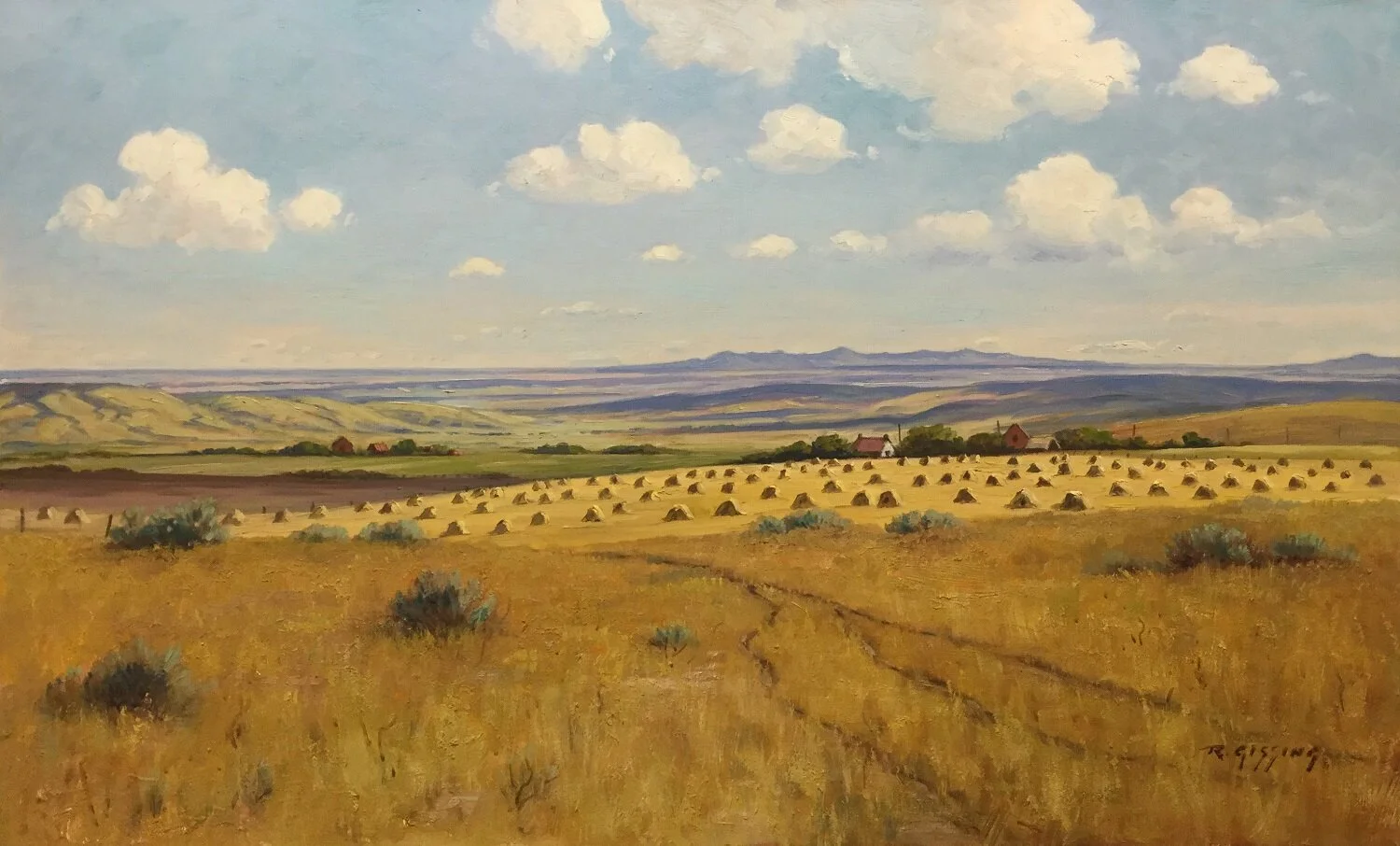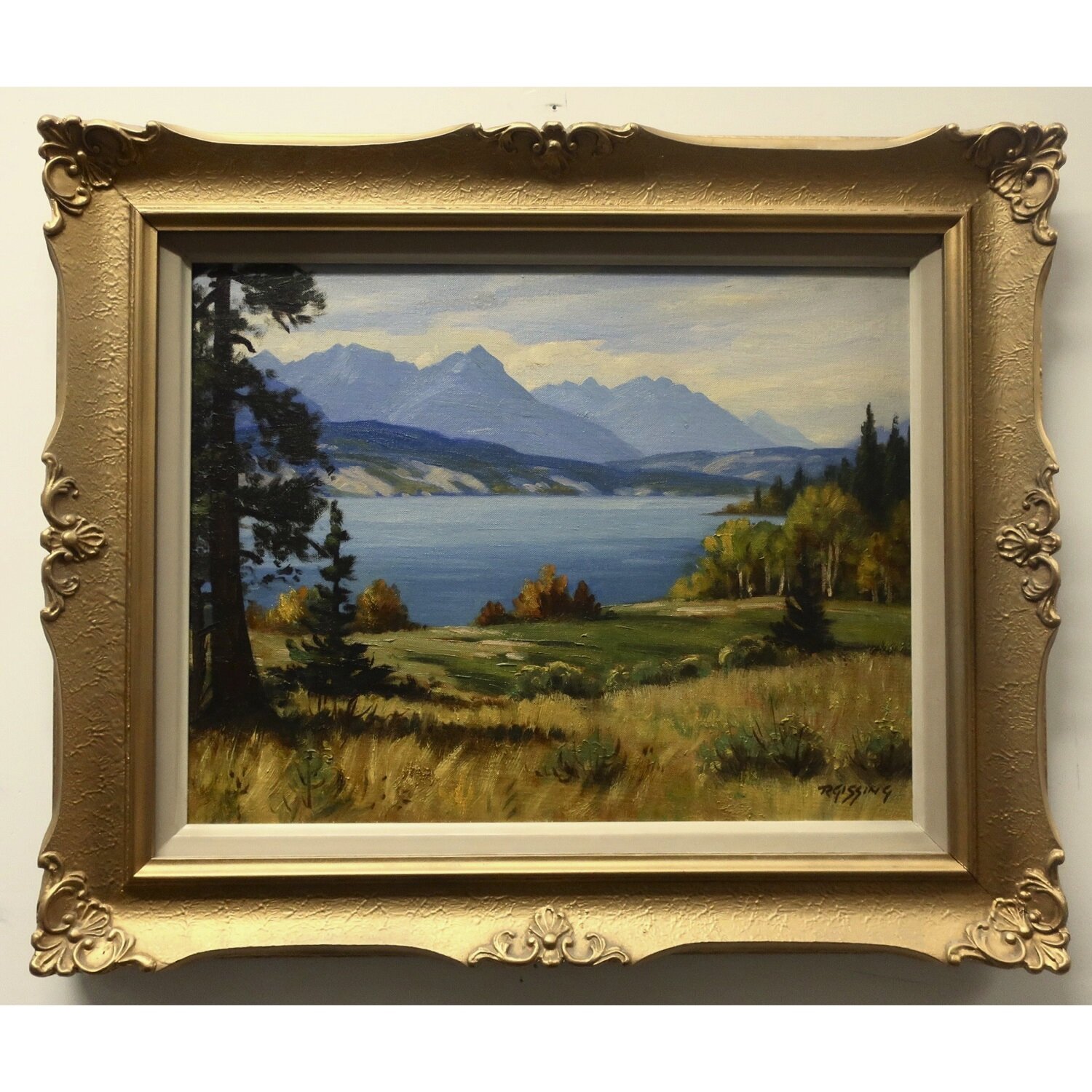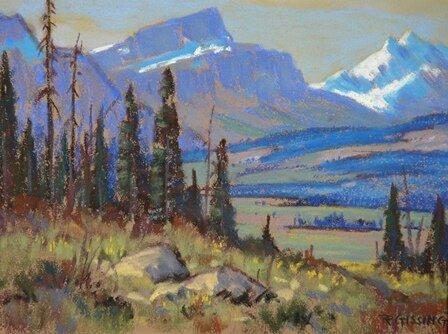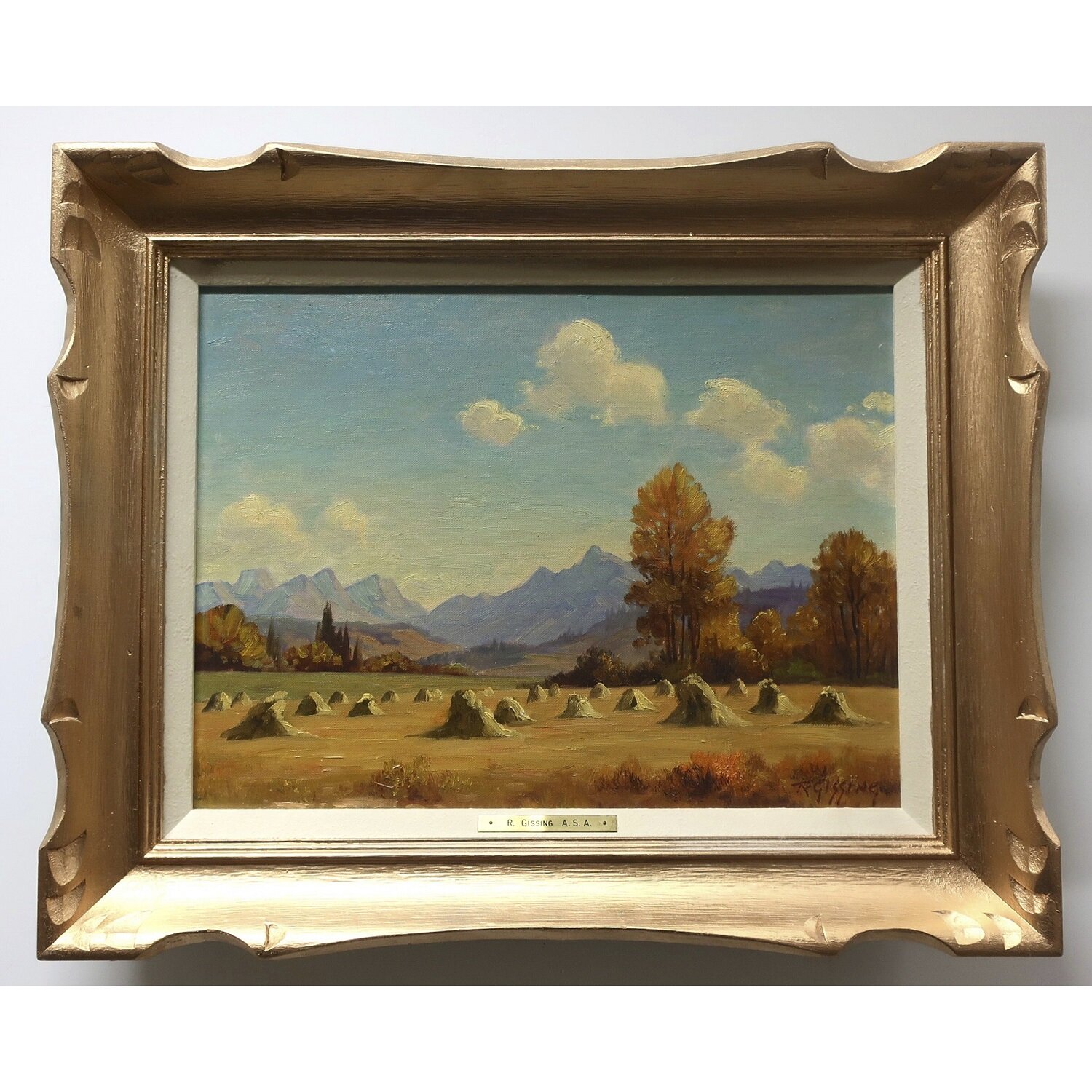Roland Gissing ASA (1895-1967)
Roland Gissing’s distinctive colourful style speaks of Western Canada.

Distant Hills (Sweetgrass Hills), 1964, oil on canvas, 22 x 36 inches (56 x 91.5 cm), framed, condition: excellent, $11,750.00 Cdn.

Autumn In the Highwood Valley, c.1961, oil on canvas board, 12 x 16 inches (30.5 x 40.5 cm), original frame, condition: excellent, sold.

Mountain Meadow, c.1965, oil on canvas board, 14 x 18 inches (35.5 x 46 cm), original frame, condition: excellent, sold.

Near Ghost River, Alberta, pastel/paper, 9 x 12 inches Provenance: private collection; Description: signed l.r. (R. Gissing); Condition: excellent, sold

In Highwood Valley, 1961, oil on canvas board, 12 x 16 inches (30.5 x 40.5 cm), original frame, condition: excellent, sold.

Bow Valley On Jasper Highway (Waputik Range), 1952, oil/canvas, 22x30 inches, Provenance: private collection; Description: signed l.r. (R. Gissing); Condition: excellent, sold
Biography
1895-1967
The clarity and colourful form in his paintings conveyed a direct and simple view of the land, sufficient to broaden and enrich the Canadian concept of heritage.
— Grant MacEwan, 1988
In 1930 he was an Associate Member of the Alberta Society of Artists and a Full Member by 1947. He was also a member of the Calgary Sketch Club.
Gissing was born in England, coming to Canada in 1913, working initially as a ranch hand after an unsuccessful try at homesteading near Innisfail, Alberta. He indicated that watching Westerns “kindled” his desire to come to Canada. He was hired as a cowhand at Calgary and rode the range for ten years in Alberta, Montana, Nebraska, and Arizona. He made sketches of ranch scenes, stampedes and life on the range, there are a number housed in the Glenbow Museum Permanent Collection. At this time, he painted in smaller format. He returned to Alberta to try his luck at the Calgary Stampede and settled at the junction of the Ghost and Bow Rivers near Cochrane (west of Calgary) in 1923.
Gissing was largely self-taught, although he received art instruction in England. Throughout his travels he met and received encouragement for his drawings from a wide range of individuals, such as Charlie Russell (Montana) - the famous Western artist, Will James (Nevada), the cowboy writer of western stories, and C.W. Jefferys (a prominent early Canadian artist who was visiting the Mortimer Ranch in Alberta). In addition, Gissing took art instruction from A.C. Leighton (early Director and Instructor at the Provincial Institute of Art & Technology, Calgary).
In 1929 Gissing held his first one man show at Booth’s Art Shop in Calgary; it was successful and encouraged Gissing to open a studio in Calgary. He continued to work as an artist in Calgary until 1931. It was a busy time and included the decoration of the Hudson’s Bay Cafeteria and the Club Café. The Depression necessitated him moving the studio back to Ghost River, but it did not daunt his painting activity.
Gissing travelled Alberta to paint from the southern border with Montana to the Peace River Country and along the prairies of eastern Alberta. He painted the majesty, awe, and connectedness of the hills, foothills, prairies, and mountains. Depending on the need he would go by car, packhorse, or by foot to reach the locations that offered him the best vantage points.
Collections:
Windsor Castle; Art Gallery of Alberta; University of Alberta; Vancouver Art Gallery; Glenbow Museum to name a few.
References:
Ainslie, Patricia & Mary-Beth Laviolette. Alberta Art and Artists. Calgary: Fifth House Ltd., 2007, p.124.
Armstrong, Christopher and H.V. Nelles. The Painted Valley, Artists Along Alberta’s Bow River, 1845-2000, p. 58-9.
Foran, Max. Roland Gissing: The People’s Painter. Calgary: University of Calgary Press, 1988.
MacDonald, Colin B. Dictionary of Canadian Artists Volume 2. Ottawa: Canadian Paperbacks, 1977, p. 278-9.
